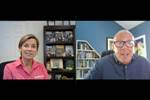
A business development executive for manufacturing and tooling shares a few trends mold builders may want to consider when strategizing.
Mold builders and injection molders should embrace the undeniable trends taking shape in the global economy and across many industries. If anything, the largest public health crisis of our lifetime has exacerbated and accelerated these changes. For example, the emergence of electric vehicles (EVs) over the past decade is gaining momentum in the automotive industry. The limited energy density of batteries will drive automakers to double their efforts in the quest to lighten vehicles with more components converting to plastics and composites.
Another example is the exponential growth in e-commerce, which has changed how consumers and businesses acquire products and services. Amazon will have hundreds of new fulfillment centers around North America. I’m sure many of you have seen videos of the orange robots running these massive sorting facilities, called automated mobile robots (AMR). In the largest fulfillment centers, there are thousands of these AMRs.
The bill of materials (BOM) and supply chain for these AMRs are not dissimilar to the modern automobile with wire harnesses, body panels, electro-mechanical assemblies, lighting, lenses, sensors and chassis. Amazon is not alone, as companies like Shopify and the largest retailers will have their own automated warehouse solutions.
Mold builders with an affinity for the automotive industry should consider pivoting into the expanding automated mobile robots market.
Then there are the agricultural robots, which will be the future as a labor shortage pushes automation into that labor-intensive market. Mold builders with an affinity for the automotive industry should consider pivoting into this AMR market. Diversification is key.
Let’s also turn to the importance of the manufacturing and availability of personal protection equipment (PPE) for government and businesses that COVID-19 has brought to light. Examine the infrastructure changes in restaurants, retail stores, government buildings and entertainment venues. You can conclude that small U.S. manufacturers are well-positioned to support these new needs, as much of it is hardware- and plastics-specific.
Moreover, rapid testing capacity across the continent will be critically important as we move forward. Expect to see pop-up mobile test sites in communities. The diagnostic equipment and consumables in these rapid sites will require an entirely new supply chain.
Many small companies today have specific niche capabilities. Few companies are generalists. So it is important to create regional working partnerships between shops to capitalize on these new opportunities.
Related Content
-
The Critical Role of Management Representatives in ISO 9001
In ISO 9001 quality management systems, the Management Representative (MR) plays a crucial role. While the 2015 version of ISO 9001 no longer mandates this position, having a trusted management member serve as an MR remains vital for streamlining operations and maintaining quality standards.
-
What is Driving Mold Lifecycle Management Digitalization?
OEMs are looking to partner with suppliers to share and track data across the supply chain for advanced intervention and process management.
-
MMT Chats: Solving Schedule and Capacity Challenges With ERP
For this MMT Chat, my guests hail from Omega Tool of Menomonee Falls, Wisconsin, who share their journey with using enterprise resource planning (ERP)—and their people—to solve their schedule and capacity load monitoring challenges.















